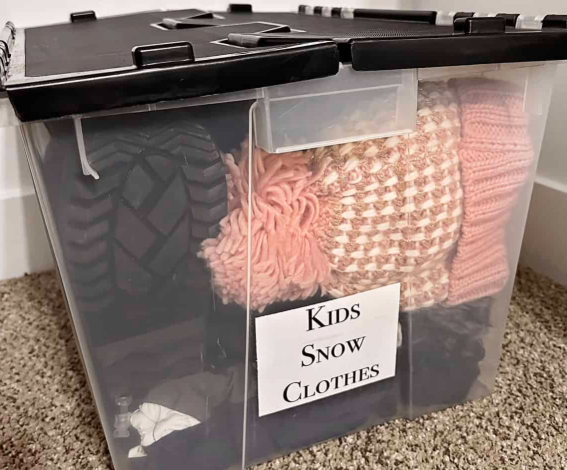
The Ultimate Guide to Storing Clothes Long-Term: Tips for Preservation and Care
Storing your clothes properly for the long term is an essential step in ensuring they stay in great condition. Whether you’re packing away seasonal items or keeping your finest garments safe, the right storage techniques can protect your clothing from damage, discoloration, and pests. Here’s everything you need to know about preparing and storing garments for long-term care.
Why Long-Term Storage Matters
Proper garment storage is often overlooked until you pull out an item that’s been damaged over time. Incorrect storage can cause issues like discoloration, mold growth, fabric stretching, and insect infestations. Storing clothes with care is critical to maintaining their quality and ensuring they’re ready to wear when you need them. This is especially important for items you don’t wear often, such as seasonal wear, formal attire, or delicate fabrics like wool and silk. With the right preparation, your clothes will last much longer and stay in good shape for future use.
Preparing Your Clothes for Storage
Before storing your clothes, it’s important to prepare them properly. Storing dirty or improperly folded garments can lead to lasting damage. Here’s how to ensure your clothes are ready for storage:
- Clean Everything Thoroughly: Always clean your garments before storing them. Dirt, body oils, or food particles can attract pests and lead to stains setting in over time. Be sure to follow specific care instructions for delicate fabrics such as silk, wool, or cashmere, as they may need dry cleaning or special detergents.
- Make Repairs: Inspect your clothing for any damage such as loose buttons, small tears, or missing threads. It’s best to repair these before storing them so that minor issues don’t get worse during long-term storage.
- Fold Properly: Proper folding techniques are crucial in maintaining the shape of your garments. Avoid sharp folds that can lead to permanent creases. Use tissue paper to separate folds for delicate fabrics. For bulkier items like sweaters, fold them flat to prevent stretching. More structured items, like blazers, should be stored in garment bags to maintain their shape.
Choosing the Right Storage Containers
The type of storage containers you choose can have a significant impact on how well your clothes fare over time. Here are some options:
- Breathable Garment Bags: For formal or structured clothing, breathable garment bags are ideal. These bags protect your clothes from dust while allowing air circulation to prevent mildew and mold. Avoid plastic garment bags, as they can trap moisture, leading to fabric degradation.
- Fabric Bins: For foldable garments, use fabric or cotton bins. These offer protection from dust while allowing airflow, which is essential for keeping clothes fresh.
- Airtight Plastic Bins: If you’re storing items that need protection from moisture, airtight plastic bins are the best option. They prevent humidity and pests from reaching your clothes. Line these bins with acid-free tissue paper to prevent fabric discoloration over time.
- Vacuum-Sealed Bags: These are great for bulky items like winter coats. However, be cautious when using them for delicate fabrics, as the compression can damage fibers. Stick to using these bags for items like synthetic materials or down-filled jackets.
Where to Store Your Clothes
Choosing the right location to store your clothes is just as important as the containers you use. Here are some things to consider:
- Avoid Damp Areas: Areas like basements or attics can be prone to mold and mildew. If you must store clothes in these areas, use airtight containers and include moisture absorbers such as silica gel to keep things dry.
- Keep Clothes Away from Direct Sunlight: Sunlight can cause fabrics to fade and weaken over time. Store your clothes in dark spaces, such as under the bed, in a closet, or in sealed storage bins placed in a cool room.
- Climate-Controlled Spaces: Ideally, your clothes should be stored in a climate-controlled environment where the temperature and humidity levels remain steady. This will prevent materials from breaking down due to extreme fluctuations.
Storing Delicate Fabrics
Certain fabrics require extra care when being stored long-term. Silk, wool, cashmere, and lace are particularly vulnerable and need special attention:
- Silk and Lace: These fabrics are sensitive to moisture and light, so always store them in cotton garment bags or fabric bins. Place acid-free tissue paper between folds to prevent creases.
- Wool and Cashmere: These fabrics are prone to moth damage, so use natural moth repellents like cedar or lavender sachets in your storage containers. Keep these items loosely folded in cotton bins to avoid stretching.
Preventing Moisture and Moth Damage
Moisture and pests are two of the biggest threats to long-term garment storage. Fortunately, with the right precautions, you can prevent both:
- Moisture Control: To prevent mold and mildew, use moisture absorbers such as silica gel or activated charcoal in your storage containers. These will help keep your clothes dry and free from excess humidity.
- Moth Prevention: Moths are notorious for ruining natural fabrics like wool, silk, and cashmere. Cedar is an excellent natural repellent, and using cedar blocks, sachets, or rings in your storage containers will keep pests at bay. Cedar also has the added benefit of being eco-friendly, making it a sustainable choice for fabric protection.
Keeping Clothes Fresh in Storage
Long-term storage can sometimes result in musty odors. To keep your clothes smelling fresh, here are some helpful tips:
- Use Natural Deodorizers: Place sachets filled with cedar, baking soda, or activated charcoal in your storage containers. These natural deodorizers absorb moisture and odors, keeping your clothes smelling fresh.
- Air Out Clothes Periodically: Every few months, remove your clothes from storage and allow them to air out in a well-ventilated space. This helps prevent musty smells and allows the garments to breathe.
- Avoid Strong Fragrances: Avoid using heavily scented products like dryer sheets, as these can leave residue on delicate fabrics. Stick to natural deodorizers instead.
How to Unpack and Care for Stored Clothes
When it’s time to take your clothes out of storage, follow these steps to ensure they’re in great condition:
- Inspect the Garments: Before you unpack, check the storage containers for any signs of moisture, pests, or damage. If you find any issues, address them right away.
- Shake Out and Air Clothes: Once you’ve unpacked your clothes, gently shake each garment to remove any dust or wrinkles. Hang them up in a well-ventilated room for a few hours to freshen them up.
- Use a Steamer or Iron: For items that are wrinkled from long-term storage, use a steamer or low-heat iron to smooth out the creases. Be cautious with delicate fabrics, as high heat can cause damage.
- Check for Damage: Inspect each garment for any issues that may have occurred during storage, such as loose seams or missing buttons. Make any necessary repairs before wearing.
By following these steps, you can ensure that your stored garments are ready to wear when you need them. Proper storage, along with natural repellents and moisture control, will preserve your clothes for years, keeping them fresh, safe, and in excellent condition.






